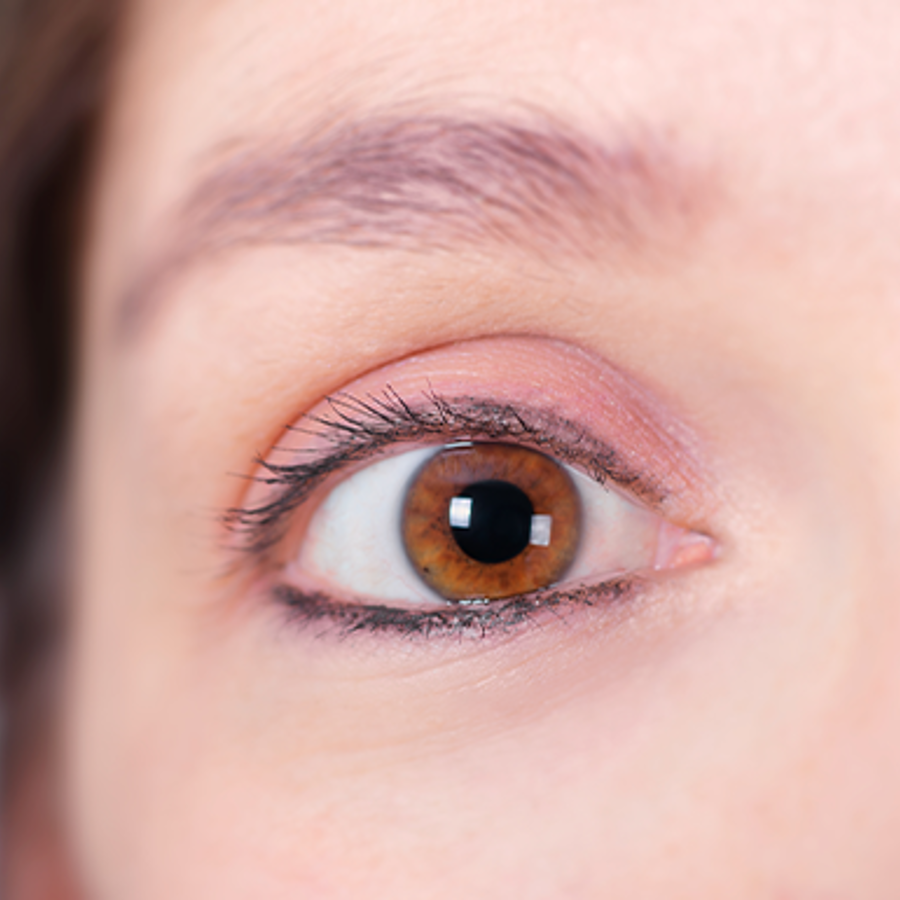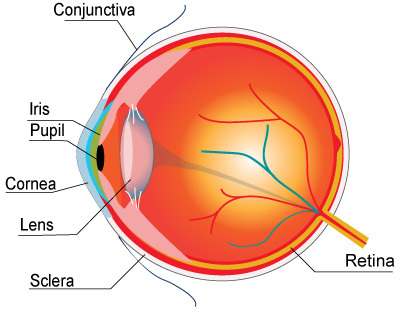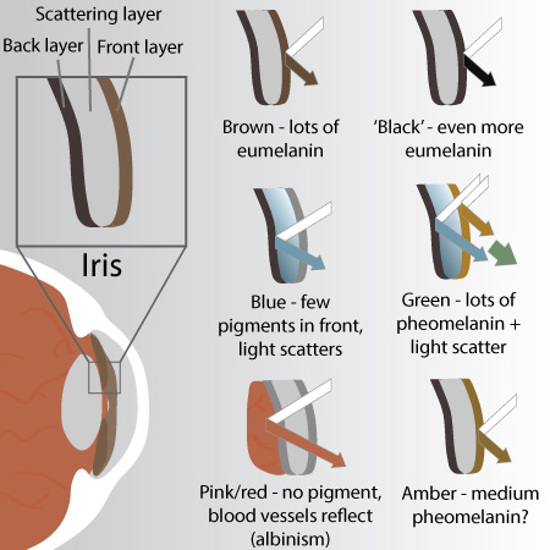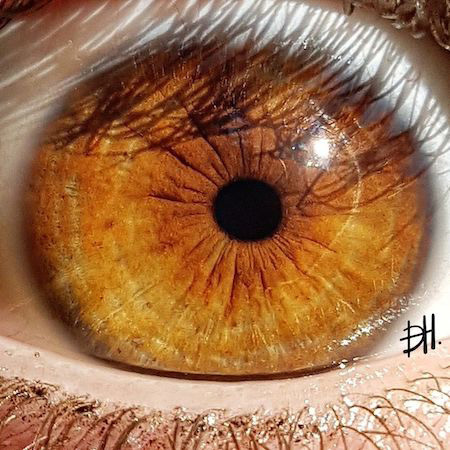
Is anything known about the genetics of eye color beyond brown, blue, or green? Like amber?
July 8, 2019

- Related Topics:
- Eye color,
- Complex traits,
- Pigmentation traits
A curious adult from Florida asks:
“When I look up how many eye colors there are, I sometimes find the color amber listed as a distinct color. Are amber eyes really distinct from other shades of brown eyes? Do we know anything about the inheritance pattern of eye color beyond just brown, blue, or green?”
It turns out that eye color is pretty complicated! Scientists have a good grasp on what causes blue eyes, and a decent understanding of how 'lighter' vs 'darker' eyes are inherited, but that's not exactly specific enough to cover the wide range of eye colors people actually have.
Eye color exists on a spectrum, so it's hard to say whether any one color is really a 'distinct' type. That being said, 'amber' is used to describe eyes which are a light yellowy-brown.
Why would someone's eyes be this color? Well, why are eyes any color?
The anatomy
The part of the eye that's colored is called the iris. It works like a little curtain for your eyeball, and changes size to control how much light gets in. To do this, it has to be able to block light.
Every iris has an opaque back layer that's dark with brown pigment. This helps block out unwanted light!
But there's another layer to the iris. The front of the iris can come in different colors. This is how there are different colored eyes!
The color of the front layer comes from melanin pigments, just like the color of skin and hair. There are two types of melanin involved, eumelanin and pheomelanin.

Brown eyes: lots of eumelanin pigment
Eumelanin is dark brown and responsible for dark skin and hair. Most people - almost 80% worldwide - have lots of eumelanin in their irises. Their hair and eyes look brown because the eumelanin absorbs most of the light hitting them and keeps it from reflecting back.
Blue eyes: scattered light
People with very little eumelanin – less than 10% worldwide - have blue eyes. There isn't actually anything blue in them, they just look that way because blue light is more likely to reflect back than other colors.
This is the same kind of effect that makes the sky look blue, even though air is clear. Because blue light scatters more, you see more of it bouncing out of the sky at you.
This kind of light scattering doesn't happen in hair, so when it has little eumelanin it looks blond. This is why blond hair and blue eyes often go together.
Green eyes: Pheomelanin pigment + scattered light
The other type of melanin is pheomelanin, which looks reddish-yellow. In around 2% of people, it combines with the blue scattering effect and makes eyes look green. In hair it looks reddish - this is why green eyes and red hair often go together!
Hazel and amber eyes: other combinations of pigment + scattered light
There are many combinations of eumelanin and pheomelanin that don't make clearly 'blue' 'brown' or 'green' eyes. Around 5% of people have 'Hazel' eyes - a mixture of brown and green, with medium levels of eumelanin and pheomelanin.
Roughly the same amount of people have the kind of light yellow-brown eyes you'd call 'Amber'. Their eyes probably have the same pigments as brown eyes, with some extra pheomelanin for the yellow tint. I wasn't able to find any research showing that for sure, though.

The genetics
There are lots of genes that affect eye color. We know of at least 15 so far, and there may be others! Because of this, children can have almost any eye color no matter what colored eyes their parents have.
Any gene that affects melanocytes (the special cells that produce melanin) can affect your coloration. This can include your eye, hair and skin color. Some genes will affect how your melanocytes grow, how many melanocytes your body has, or what kind of pigment they make.
You melanocytes can sometimes change over time - babies are often born with blue eyes because their melanocytes haven't had time to fill them up with melanin yet!
Although many genes play a part, there is one that can predict most differences in eye color: the OCA2 gene. We think it controls how the materials that are made into melanin are moved around in melanocytes. Changes to OCA2 can make a person produce more or less melanin.
If your OCA2 gene doesn't work at all, no pigment can be made. This is known as 'oculocutaneous albinism'. People with albinism seem to have pink or red eyes, as they're missing even the pigment in the back layer of their iris. You can see right through to the red blood vessels in the backs of their eyes!
Unfortunately this also causes vision problems and a sensitivity to sunlight.
So eye color doesn't come in clear categories, and lots of genes affect it. If it's a useful way to talk about people's eyes, I think 'amber' is as real an eye color as 'brown' or 'blue'. Someday we may understand the genetics well enough to make more accurate categories, but for now... we'll just have to use our eyes.

Read More:
- The World's Population By Eye Color Percentages
- HudsonAlpha: The genetics of eye color
- Medline: Eye color genetics

Author: Guillaume Riesen
When this answer was published in 2019, Guillaume was a Ph.D. candidate in the Department of Neuroscience, studying binocular visual perception in humans in Justin Gardner’s laboratory. He wrote this answer while participating in the Stanford at The Tech program.
 Skip Navigation
Skip Navigation
